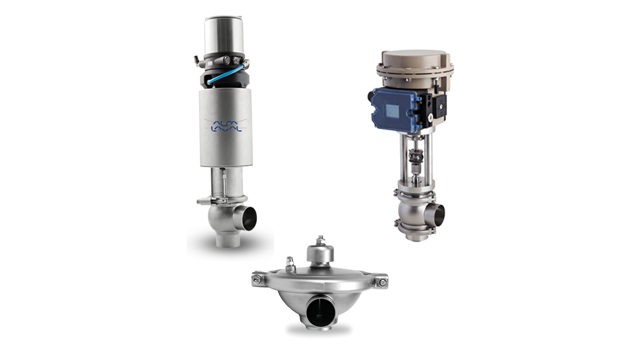The Function of Control Valves in Fluid Circulation Monitoring Solution
The Function of Control Valves in Fluid Circulation Monitoring Solution
Blog Article

Maximize Energy Savings and Comfort With Advanced Structure Automation Controls
In the realm of modern-day architecture and facility administration, the assimilation of advanced building automation regulates stands as a pivotal development. By using the power of automation, buildings can adapt, react, and advance in means that were as soon as unthinkable.
Power Efficiency Conveniences
Power efficiency benefits can substantially lower power consumption and operational costs in buildings. By carrying out energy-efficient techniques and technologies, building owners and operators can accomplish considerable savings while also adding to environmental sustainability. Among the primary benefits of boosting energy effectiveness in structures is the reduction of energy costs. Energy-efficient systems, such as sophisticated structure automation controls, can maximize making use of sources like air conditioning, illumination, and heating, bring about reduced power costs in time.
Furthermore, boosted power efficiency can lengthen the life expectancy of building tools and systems. By operating more efficiently, heating and cooling systems, lighting fixtures, and other structure elements experience less wear and tear, leading to reduced upkeep and replacement prices. Additionally, energy-efficient structures commonly command greater property values and rental rates, providing long-term monetary advantages to owners.
Additionally, energy effectiveness can boost resident convenience and efficiency. Correctly regulated indoor settings with optimum lights and thermal problems produce an even more enjoyable and helpful work area, bring about enhanced worker satisfaction and performance. In general, the power efficiency benefits connected with sophisticated structure automation controls are multifaceted, including expense financial savings, ecological stewardship, and occupant well-being.
Enhanced Convenience Control
Enhancing comfort control in building settings requires an advanced combination of advanced automation systems for optimum owner well-being. By utilizing advanced structure automation controls, facilities can customize the indoor setting to satisfy the particular needs and choices of occupants. control valves.
Enhanced comfort control exceeds fundamental temperature changes. It includes features such as personalized settings, occupancy sensors, and all-natural light use to produce a vibrant and responsive setting. By incorporating these sophisticated controls, buildings can not only improve convenience yet also enhance energy efficiency by maximizing system procedures based upon real tenancy and usage patterns. Eventually, prioritizing owner comfort through innovative automation systems results in an extra enjoyable and healthier interior setting.
Operational Efficiency Improvements

In addition, the execution of real-time monitoring and Recommended Reading analytics devices makes it possible for structure operators to recognize power ineffectiveness and operational abnormalities promptly. By continually keeping track of energy use patterns and system performance metrics, adjustments can be made in real-time to enhance power intake and company website make certain peak functional performance. control valves. Furthermore, incorporating need reaction techniques into structure automation controls can even more improve functional performance by dynamically readjusting energy usage based on grid problems and prices signals
Indoor Environment Optimization
Effective interior environment optimization is a fundamental aspect of structure automation controls, ensuring residents' convenience and wellness while maximizing energy financial savings. By making use of innovative sensors and controls, constructing automation systems can constantly change and check temperature level, humidity degrees, air quality, and air flow to create an optimum interior setting. Preserving comfy and consistent conditions not only improves owner satisfaction yet also improves efficiency and overall well-being.
Indoor climate optimization likewise plays an important function in power effectiveness. By fine-tuning air flow, cooling, and home heating systems based on real-time information and tenancy patterns, constructing automation controls can considerably decrease power consumption - control valves. Implementing methods such as demand-controlled ventilation and thermal zoning can aid minimize power waste while making sure that each area of the building gets the needed conditioning.

Lasting Atmosphere Production
Structure automation controls not only maximize interior climate conditions for energy efficiency and owner convenience however also lay the structure for producing a lasting setting via critical administration of click over here now sources and systems. By integrating advanced structure automation innovations, such as sensing units, actuators, and smart software application, facilities can monitor and change power use in real-time to lessen waste and minimize their carbon impact. These systems make it possible for predictive maintenance, identifying possible issues prior to they escalate and optimizing tools efficiency to boost long life and effectiveness.
In addition, sustainable environment production expands past power management to include water preservation, waste decrease, and interior air top quality renovation. Structure automation controls can control water use, spot leaks, and guarantee correct waste disposal practices, contributing to overall sustainability initiatives. Additionally, by regulating and monitoring air flow and purification systems, these technologies boost occupant wellness and performance while lowering energy consumption related to a/c procedures.
Verdict
In final thought, advanced building automation controls offer significant advantages in terms of power cost savings, convenience control, functional effectiveness, interior climate optimization, and creating a sustainable environment. By applying these controls, buildings can attain optimum performance while reducing energy usage and enhancing resident convenience. It is noticeable that the usage of innovative automation innovation is essential in enhancing structure performance and producing a more sustainable future.
Energy effectiveness benefits can dramatically lower energy consumption and functional costs in buildings. Overall, the energy performance benefits associated with advanced structure automation controls are diverse, incorporating expense financial savings, environmental stewardship, and passenger wellness.
Furthermore, incorporating demand feedback strategies right into building automation controls can even more improve operational efficiency by dynamically changing power use based on grid problems and rates signals.
Building automation regulates not only enhance interior environment conditions for power effectiveness and resident convenience but also lay the foundation for producing a sustainable environment via calculated management of resources and systems.In conclusion, progressed building automation manages deal significant advantages in terms of energy financial savings, convenience control, functional effectiveness, interior climate optimization, and producing a lasting atmosphere.
Report this page